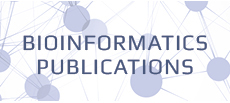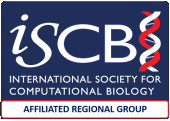SPECIAL SESSION ON Computational Intelligence methods in bioinformatics @ EAIS 2020
Location
Date
27 - 29 May 2020
Deadline
January 10, 2020
General Chairs
Le Hoang Son, Angelo Ciaramella, Giosuè Lo Bosco, Alessio Ferone.
Contact
In modern biomedical research, high‐throughput technologies, such as the next-generation sequencing, produces huge data sets. High‐throughput data are collected in the broad context of genomics, epigenomics, transcriptomics and proteomics. From these data, it is possible to explain the pathogenesis or predict the predisposition and/or the clinical outcome of several human diseases, among which psychiatric, cardiovascular, obesity, aetiology of a number of diseases such as cancer, schizophrenia, and Alzheimer, just to name a few.
The key factor to exploit such rapid growth of biological data is to develop strategies that would allow the analysis at the rate at which it’s gathered. Moreover, in many real‐life circumstances, a timely response or prediction could be vital for saving lives. In this context, the identification of new strategies for processing and analyzing such kind of data is becoming more and more necessary since their large amount of data can sometimes represent a real obstacle to effectively identify the most relevant patterns and to build comprehensive models capable of explaining complex biological phenotypes.
The aim of the special session is to host original papers and reviews on recent research advances and the state‐of‐the‐art methods in the fields of Computational Intelligence, Machine Learning Data Mining and Distributed Computing methodologies concerning with the processing of omics data in order to shed light about the relationship between genotype and disease‐related phenotype.
Relevant topics within this context include, but are not limited to:
•Machine learning
•Sparse Coding
•Data Mining
•Fuzzy and Neuro‐Fuzzy Systems
•Probabilistic and statistical modelling
•OMICs in the context of genomics, epigenomics, transcriptomics, proteomics
•Evaluation of protein folding and/or protein‐ligand interactions (where ligands are proteins, DNA, RNA and small molecules), also in the context of genetic variation
•Identification of potential gene regulatory elements (i.e., binding transcription factors, miRNAs, etc.)
•Analysis of common genetic variants (i.e., SNPs, HLA genotype microsatellites) Analysis of experimental data from next‐generation sequencing
•Analysis of gene expression data
•Biomedical applications
The key factor to exploit such rapid growth of biological data is to develop strategies that would allow the analysis at the rate at which it’s gathered. Moreover, in many real‐life circumstances, a timely response or prediction could be vital for saving lives. In this context, the identification of new strategies for processing and analyzing such kind of data is becoming more and more necessary since their large amount of data can sometimes represent a real obstacle to effectively identify the most relevant patterns and to build comprehensive models capable of explaining complex biological phenotypes.
The aim of the special session is to host original papers and reviews on recent research advances and the state‐of‐the‐art methods in the fields of Computational Intelligence, Machine Learning Data Mining and Distributed Computing methodologies concerning with the processing of omics data in order to shed light about the relationship between genotype and disease‐related phenotype.
Relevant topics within this context include, but are not limited to:
•Machine learning
•Sparse Coding
•Data Mining
•Fuzzy and Neuro‐Fuzzy Systems
•Probabilistic and statistical modelling
•OMICs in the context of genomics, epigenomics, transcriptomics, proteomics
•Evaluation of protein folding and/or protein‐ligand interactions (where ligands are proteins, DNA, RNA and small molecules), also in the context of genetic variation
•Identification of potential gene regulatory elements (i.e., binding transcription factors, miRNAs, etc.)
•Analysis of common genetic variants (i.e., SNPs, HLA genotype microsatellites) Analysis of experimental data from next‐generation sequencing
•Analysis of gene expression data
•Biomedical applications




